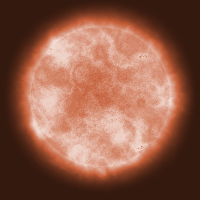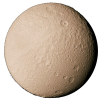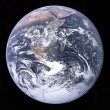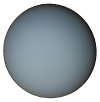Sidebar
system:e-11
Table of Contents
Star System E-11
E-11 is an uninhabited star system. It was mapped by the United Outer Colonies but no colonization effort was ever made.
Information
Star
- Type: M6 IV Red Subgiant
- Radius: 1.63 x 106 km (2.34 x sol)
- Mass: 1.64 x 1030 kg (0.82 x sol)
- Temperature: 2500 K
- Luminosity: 2.38 x 1027 W (6.23 x sol)
Planetary Information
E-11 I
- Type: Rock Planet
- Orbital Radius: 1.43 x 108 km (0.95 AU)
- Period: 8.98 x 103 hours (1.03 earth years)
- Gravity: 8.10 m/s2 (0.83 x earth)
- Information: A typical near star planet, E-11 I is more or less a large cratered rocky planet with a crust rich in the precursor ores for Durandium and Nerimium. It has a nearly non-existent atmosphere that contains trace amounts of nitrogen and carbon dioxide. One notable feature is a massive impact crater on the planet's northern pole.
E-11 II
- Type: Rock Planet
- Orbital Radius: 2.19 x 108 km (1.46 AU)
- Period: 1.71 x 104 hours (1.95 earth years)
- Gravity: 7.50 m/s2 (0.77 x earth)
- Information: Like the first planet, E-11 II is a rocky world although its further distance has enabled it to retain a thin atmosphere of carbon dioxide. The planet is 'cool' enough for its poles to retain solid carbon dioxide ice during the winter months. Its crust, while not as rich as the first planet of the system, also contains vast amounts of precursor ores.
E-11 III
- Type: Terrestrial World
- Orbital Radius: 2.86 x 108 km (1.91 AU)
- Period: 2.55 x 104 hours (2.92 earth years)
- Physics: Standard iron/silicate
- Gravity: 11.64 m/s2 (1.19 x earth)
- Hydrosphere: 80 % water
- Atmosphere: Oxygen/Nitrogen Mixture
- Biosphere: Full terrestrial biosphere.
- Information: A lush tropical world, two major features of this planet are its vast and deep oceans and its almost total coverage of dense tropical and extra tropical forests. Its surface features four main continents (only one of which as the height to host any snow fall), and numerous archipelagos. Due to the small land mass, both poles are composed of open water leading to a fairly warm and humid atmosphere.
E-11 IV
- Type: Terrestrial World
- Orbital Radius: 4.21 x 108 km (2.82 AU)
- Period: 4.55 x 104 hours (5.20 earth years)
- Physics: Small iron/silicate
- Gravity: 7.13 m/s2 (0.73 x earth)
- Hydrosphere: 60 percent water, 5 percent ice
- Atmosphere: Oxygen/Nitrogen Mixture
- Biosphere: Full terrestrial biosphere.
- Information: Unlike the third planet, E-11 IV is slightly farther from its star leading to slightly cooler temperatures. As a result this world's climate is more on par with that seen in temperate planets, both poles feature ice sheets with a band of tundra, temperate, then tropical vegetation leading down to the equator.
E-11 V
- Type: Rock Planet
- Orbital Radius: 7.14 x 108 km (4.77 AU)
- Period: 1.00 x 105 hours (11.48 earth years)
- Gravity: 4.58 m/s2 (0.47 x earth)
- Information: The fifth planet in the system is a small dusty world, its atmosphere sufficiently thick enough to support atmospheric pressure and maintained by the planet's volcanism. However the atmosphere is toxic, composed of carbon dioxide and various volcanic gases. Notable features include a large impact crater in the southern hemisphere which appears to have triggered an on going basalt flood event which continues to stain the planet's atmosphere with long trails of soot and ash.
E-11 VI
- Type: Rock Planet
- Orbital Radius: 1.34 x 109 km (8.92 AU)
- Period: 2.57 x 105 hours (29.37 earth years)
- Gravity: 17.44 m/s2 (1.78 x earth)
- Information: The farthest rocky body in the star system that is considered a planet, E-11 VI is for the most part… boring. A simple rocky world with no atmosphere covered in a combination of water ice, dust, and rock.
Asteroid Belt
- Type: Asteroid Belt
- Orbital Radius: 2.63 x 109 km (17.59 AU)
- Period: 7.11 x 105 hours (81.29 earth years)
E-11 VII
- Type: Neptunium Planet
- Orbital Radius: 4.73 x 109 km (31.63 AU)
- Period: 1.71 x 106 hours (196.00 earth years)
- Gravity: 12.43 m/s2 (1.27 x earth)
- Moons: 21 Moons (6 Large)
OOC Notes
This page was originally created on 2012/11/10 06:56 by Arieg.
| Places of the SARPiverse | |
|---|---|
| Place Categories | star system |
| Risk Level | low |
Quality:
system/e-11.txt · Last modified: 2024/10/11 19:00 by andrew
Page Tools
Content copyright StarArmy.com and/or individual contributors and used under license. Star Army is a registered trademark.
Terms of Service - Privacy Policy
Terms of Service - Privacy Policy





